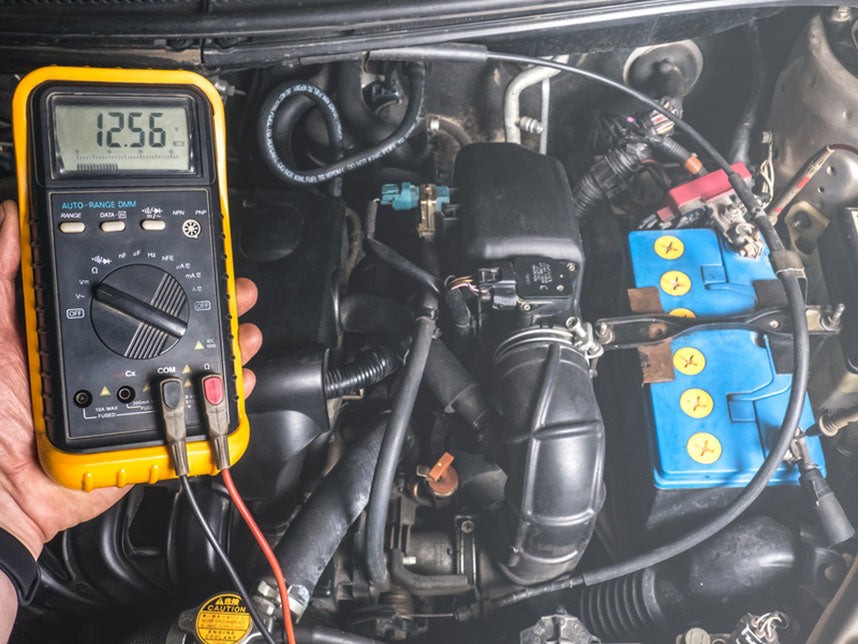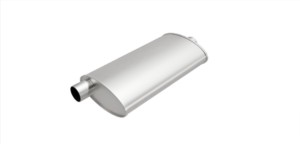Does a New TPMS Sensor Need Programming: The Ultimate Guide
Does a new TPMS sensor need programming? Yes, often a new TPMS sensor needs programming, especially if it’s a universal or programmable sensor. At CARDIAGTECH.BIZ, we understand the nuances of TPMS systems and offer solutions to make your automotive repairs efficient and accurate. Proper TPMS maintenance ensures vehicle safety and optimal performance.
1. Understanding TPMS Sensors and Their Types
1.1. What is a TPMS Sensor?
A Tire Pressure Monitoring System (TPMS) sensor is a crucial component in modern vehicles, designed to monitor the air pressure inside the tires. These sensors transmit real-time data to the vehicle’s computer, alerting the driver to any significant pressure loss. This early warning helps prevent accidents, improves fuel efficiency, and extends tire life.
1.2. Types of TPMS Sensors: OE, Programmable, and Multi-Application
There are three main types of TPMS sensors:
-
Original Equipment (OE) Sensors: These are pre-programmed by the manufacturer for specific vehicle models. They typically do not require additional programming but still need to be relearned to the vehicle’s system.
-
Programmable Sensors (Universal/Clone-able): These sensors are blank and must be programmed with the correct protocol and application information for the specific vehicle before installation. This requires specialized tools and software.
-
Multi-Application Sensors: These sensors come pre-loaded with protocols for multiple vehicle models, eliminating the need for programming. However, they still require a relearn procedure to connect with the vehicle’s TPMS system.
Alt text: A collection of diverse TPMS sensor models, illustrating OE, programmable, and multi-application types.
2. The Role of Programming in TPMS Sensor Installation
2.1. What Does TPMS Sensor Programming Involve?
TPMS sensor programming involves loading the correct protocol and application data onto a blank sensor. This process ensures that the sensor can communicate effectively with the vehicle’s TPMS system. Programming is essential for universal or programmable sensors, as they are not pre-configured for any specific vehicle.
2.2. Why is Programming Necessary for Some Sensors?
Programming is necessary because universal TPMS sensors are designed to be compatible with a wide range of vehicles. Without programming, these sensors would not know which vehicle they are installed in, and they would be unable to transmit the correct data to the vehicle’s computer.
2.3. Steps Involved in TPMS Sensor Programming
- Gather Information: Identify the vehicle’s make, model, and year to determine the correct protocol for the TPMS sensor.
- Use a Programming Tool: Connect a TPMS programming tool to the sensor.
- Select Vehicle Information: Choose the correct vehicle information from the tool’s database.
- Program the Sensor: Follow the tool’s prompts to program the sensor with the necessary data.
- Verify Programming: Use the tool to verify that the sensor has been successfully programmed.
3. TPMS Relearn vs. TPMS Programming: Understanding the Difference
3.1. Defining TPMS Relearn
TPMS relearn is the process of teaching the vehicle’s computer to recognize the new TPMS sensor. This procedure is required after installing any new TPMS sensor, regardless of whether it is an OE sensor, a programmable sensor, or a multi-application sensor.
3.2. Defining TPMS Programming
TPMS programming, as mentioned earlier, is the process of loading the correct protocol and application data onto a blank sensor. This step is only required for universal or programmable sensors.
3.3. Key Differences Between Relearn and Programming
| Feature | TPMS Relearn | TPMS Programming |
|---|---|---|
| Purpose | Connects the sensor to the vehicle’s TPMS system | Loads the correct protocol onto a blank sensor |
| Requirement | Required for all new TPMS sensors | Only required for universal or programmable sensors |
| Procedure | Involves using a TPMS scan tool or a driving procedure (for some vehicles) | Involves using a TPMS programming tool to load specific vehicle data onto the sensor |
| Timing | Performed after sensor installation | Performed before sensor installation |
| Tool Required | TPMS scan tool | TPMS programming tool |
3.4. Why Both Steps Are Often Necessary
Even if a sensor is pre-programmed or is a multi-application sensor, the relearn procedure is still necessary. The relearn process ensures that the vehicle’s computer knows the unique ID of the new sensor and can accurately monitor tire pressure.
4. Identifying When a New TPMS Sensor Needs Programming
4.1. Scenarios Requiring TPMS Sensor Programming
- Using Universal TPMS Sensors: If you are installing universal TPMS sensors, programming is always required.
- Replacing a Damaged Sensor with a Blank Sensor: When replacing a damaged sensor with a new, unprogrammed sensor, you must program it with the correct vehicle information.
- Cloning an Existing Sensor: If you are cloning an existing sensor, you will need to program the new sensor with the same ID as the old sensor.
4.2. Scenarios Where Programming Might Not Be Necessary
- Using OE Sensors: OE sensors are pre-programmed for specific vehicles and typically do not require additional programming.
- Using Multi-Application Sensors: Multi-application sensors come pre-loaded with protocols and do not require programming.
4.3. How to Determine if a Sensor Needs Programming
- Check the Sensor Type: Determine whether the sensor is an OE, programmable, or multi-application sensor.
- Read the Sensor Documentation: Refer to the sensor’s documentation to see if programming is required.
- Use a TPMS Scan Tool: A TPMS scan tool can often identify whether a sensor needs programming.
5. Tools and Equipment Required for TPMS Sensor Programming
5.1. TPMS Programming Tools: A Detailed Overview
A TPMS programming tool is essential for programming universal TPMS sensors. These tools connect to the sensor and allow you to load the correct vehicle-specific data onto the sensor.
5.2. Essential Features to Look for in a TPMS Programming Tool
- Vehicle Coverage: Ensure the tool supports a wide range of vehicle makes and models.
- Ease of Use: Look for a tool with a user-friendly interface and clear instructions.
- Update Capability: The tool should be able to receive regular updates to support new vehicles and protocols.
- Additional Features: Some tools offer additional features such as sensor testing and relearn procedures.
5.3. Recommended TPMS Programming Tools Available at CARDIAGTECH.BIZ
At CARDIAGTECH.BIZ, we offer a variety of high-quality TPMS programming tools to meet your needs. Our selection includes tools from leading manufacturers, ensuring compatibility and reliability. Contact us at +1 (641) 206-8880 or visit our website at CARDIAGTECH.BIZ for more information.
6. Step-by-Step Guide to Programming a TPMS Sensor
6.1. Preparing for the Programming Process
- Gather Necessary Tools: Ensure you have a TPMS programming tool, a compatible TPMS sensor, and the vehicle’s make, model, and year information.
- Park the Vehicle: Park the vehicle in a safe location and turn off the ignition.
- Identify the Sensor Location: Determine which sensor you will be programming.
6.2. Connecting the TPMS Programming Tool
- Turn on the Tool: Power on the TPMS programming tool and follow the on-screen instructions.
- Connect to the Sensor: Connect the tool to the TPMS sensor according to the manufacturer’s instructions. This may involve placing the tool near the sensor or connecting it via a cable.
6.3. Selecting the Correct Vehicle Information
- Enter Vehicle Details: Use the tool to select the vehicle’s make, model, and year.
- Confirm Information: Verify that the selected information is correct.
6.4. Initiating the Programming Sequence
- Start Programming: Follow the tool’s prompts to begin the programming sequence.
- Monitor Progress: Observe the tool’s display to monitor the progress of the programming process.
6.5. Verifying Successful Programming
- Check Sensor Data: Use the tool to read the sensor data and verify that it matches the vehicle’s specifications.
- Confirm Completion: Ensure the tool indicates that the programming process was successful.
7. Common TPMS Programming Issues and How to Troubleshoot Them
7.1. Sensor Not Recognized by the Programming Tool
- Check Compatibility: Ensure the sensor is compatible with the programming tool.
- Verify Connection: Make sure the tool is properly connected to the sensor.
- Update Tool Software: Ensure the programming tool has the latest software updates.
7.2. Programming Fails to Complete
- Check Battery: Ensure the sensor has sufficient battery life.
- Verify Vehicle Information: Double-check that the correct vehicle information is selected.
- Try Again: Attempt the programming process again.
7.3. Error Messages on the Programming Tool
- Read the Manual: Refer to the tool’s manual for specific error code explanations.
- Contact Support: Contact the tool manufacturer’s support for assistance.
- Check Sensor: Verify the sensor is not defective.
7.4. Seeking Professional Assistance at CARDIAGTECH.BIZ
If you encounter persistent issues with TPMS sensor programming, don’t hesitate to seek professional assistance. At CARDIAGTECH.BIZ, our team of experts can provide guidance and support to ensure your TPMS systems are functioning correctly. Reach out to us at +1 (641) 206-8880 or visit CARDIAGTECH.BIZ for reliable solutions.
8. The Importance of TPMS Relearn After Programming
8.1. Why Relearn is Necessary Even After Programming
Even after successfully programming a TPMS sensor, the relearn procedure is crucial. The relearn process connects the sensor to the vehicle’s TPMS system, allowing it to accurately monitor and report tire pressure.
8.2. Different Types of Relearn Procedures
- Auto Relearn: Some vehicles can automatically relearn the TPMS sensors after a short driving period.
- OBD Relearn: This method requires a TPMS scan tool to connect to the vehicle’s OBD port and initiate the relearn process.
- Manual Relearn: This procedure involves a specific sequence of steps, such as inflating and deflating tires in a particular order.
8.3. Step-by-Step Guide to Performing a TPMS Relearn
- Check Vehicle Manual: Consult the vehicle’s manual for the recommended relearn procedure.
- Use a TPMS Scan Tool (if required): Connect the TPMS scan tool to the vehicle’s OBD port.
- Follow On-Screen Instructions: Follow the tool’s prompts to initiate and complete the relearn process.
- Verify Completion: Ensure the vehicle’s TPMS system is functioning correctly after the relearn.
Alt text: Automotive technician utilizing a TPMS scan tool to execute the relearn process on a vehicle’s TPMS.
9. The Benefits of Using Multi-Application TPMS Sensors
9.1. Understanding Multi-Application TPMS Sensors
Multi-application TPMS sensors come pre-loaded with protocols for multiple vehicle models, eliminating the need for programming. These sensors offer a convenient and efficient solution for TPMS maintenance.
9.2. Advantages of Multi-Application Sensors Over Programmable Sensors
- No Programming Required: Eliminates the time and effort required for programming.
- Reduced Risk of Errors: Reduces the risk of programming errors and compatibility issues.
- Simplified Inventory Management: Simplifies inventory management by reducing the number of different sensor types needed.
9.3. REDI-Sensor: A Prime Example of a Multi-Application Sensor
REDI-Sensor is a popular multi-application TPMS sensor that comes pre-loaded with protocols for a wide range of vehicles. This sensor offers a hassle-free solution for TPMS maintenance, saving time and reducing the risk of errors.
10. Maintaining TPMS Sensors for Optimal Performance
10.1. Regular Inspection and Maintenance Tips
- Check Tire Pressure Regularly: Ensure tires are inflated to the recommended pressure.
- Inspect Sensors for Damage: Regularly inspect TPMS sensors for physical damage.
- Replace Valve Stems: Replace valve stems during tire changes to prevent corrosion and leaks.
10.2. Proper Storage of TPMS Sensors
- Store in a Cool, Dry Place: Store TPMS sensors in a cool, dry place to prevent damage.
- Avoid Extreme Temperatures: Avoid exposing sensors to extreme temperatures.
- Use Protective Packaging: Use protective packaging to prevent physical damage during storage.
10.3. Extending the Lifespan of TPMS Sensors
- Use Quality Sensors: Use high-quality TPMS sensors from reputable manufacturers.
- Follow Installation Guidelines: Follow the manufacturer’s installation guidelines carefully.
- Perform Regular Maintenance: Perform regular maintenance to ensure optimal performance and extend the lifespan of TPMS sensors.
11. The Cost of TPMS Sensor Programming and Replacement
11.1. Factors Affecting the Cost of TPMS Sensor Programming
- Type of Sensor: The type of sensor (OE, programmable, or multi-application) can affect the cost.
- Programming Tool Used: The cost of the programming tool can vary.
- Labor Costs: Labor costs can vary depending on the shop and location.
11.2. Average Cost of Replacing a TPMS Sensor
The average cost of replacing a TPMS sensor can range from $50 to $250 per sensor, including parts and labor.
11.3. Ways to Save Money on TPMS Sensor Maintenance
- Use Multi-Application Sensors: Multi-application sensors can save time and reduce the risk of errors, potentially lowering labor costs.
- Perform Maintenance Regularly: Regular maintenance can help prevent sensor damage and extend their lifespan.
- Shop Around: Compare prices from different shops to find the best deal.
12. Legal and Safety Considerations Related to TPMS
12.1. Understanding TPMS Regulations
In many countries, TPMS is a mandatory safety feature in vehicles. These regulations are designed to improve vehicle safety and reduce accidents caused by underinflated tires.
12.2. The Importance of Properly Functioning TPMS for Vehicle Safety
A properly functioning TPMS is essential for vehicle safety. It alerts the driver to low tire pressure, which can lead to tire failure, loss of control, and accidents.
12.3. Consequences of Ignoring TPMS Warnings
Ignoring TPMS warnings can have serious consequences, including:
- Reduced Fuel Efficiency: Underinflated tires can reduce fuel efficiency.
- Premature Tire Wear: Underinflated tires can cause premature tire wear.
- Increased Risk of Accidents: Underinflated tires can increase the risk of tire failure and accidents.
13. Choosing the Right TPMS Sensor for Your Vehicle
13.1. Factors to Consider When Selecting a TPMS Sensor
- Vehicle Compatibility: Ensure the sensor is compatible with your vehicle’s make, model, and year.
- Sensor Type: Consider whether you need an OE, programmable, or multi-application sensor.
- Quality and Reliability: Choose a high-quality sensor from a reputable manufacturer.
- Price: Compare prices from different suppliers to find the best deal.
13.2. OE vs. Aftermarket TPMS Sensors: Pros and Cons
| Feature | OE Sensors | Aftermarket Sensors |
|---|---|---|
| Compatibility | Guaranteed compatibility with the vehicle | May require programming or relearning |
| Quality | Typically high quality | Quality can vary; choose reputable brands |
| Price | Generally more expensive | Often more affordable |
| Availability | May be limited to dealerships | Widely available from various suppliers |
13.3. Recommendations for Selecting TPMS Sensors at CARDIAGTECH.BIZ
At CARDIAGTECH.BIZ, we offer a wide selection of high-quality TPMS sensors to meet your needs. Our team of experts can help you choose the right sensor for your vehicle. Contact us at +1 (641) 206-8880 or visit CARDIAGTECH.BIZ for assistance.
14. Future Trends in TPMS Technology
14.1. Advancements in TPMS Sensor Technology
TPMS technology is constantly evolving. Future trends may include:
- More Accurate Sensors: Sensors that provide more accurate and detailed tire pressure data.
- Wireless Communication: Improved wireless communication between sensors and the vehicle’s computer.
- Integration with Other Vehicle Systems: Integration with other vehicle systems, such as advanced driver-assistance systems (ADAS).
14.2. The Impact of Technology on TPMS Maintenance
Advancements in TPMS technology will likely lead to more efficient and accurate maintenance procedures. Automated relearn processes and improved diagnostic tools will simplify TPMS maintenance.
14.3. Preparing for Future TPMS Service Needs
To prepare for future TPMS service needs, technicians should:
- Stay Updated on Technology: Stay informed about the latest TPMS technology and trends.
- Invest in Training: Invest in training to learn how to service new TPMS systems.
- Acquire New Tools: Acquire the necessary tools and equipment to service advanced TPMS systems.
15. TPMS Sensor Programming FAQs
15.1. What is TPMS sensor programming?
TPMS sensor programming involves loading the correct protocol and application data onto a blank sensor, ensuring it communicates effectively with the vehicle’s TPMS system.
15.2. Why do some TPMS sensors need programming?
Universal TPMS sensors are designed to be compatible with a wide range of vehicles, necessitating programming to specify the correct vehicle and data transmission.
15.3. Which TPMS sensors do not require programming?
OE sensors, pre-programmed for specific vehicles, and multi-application sensors, pre-loaded with multiple vehicle protocols, typically do not require programming.
15.4. What tools are needed for TPMS sensor programming?
A TPMS programming tool is essential, along with the vehicle’s make, model, and year information.
15.5. How often should TPMS sensors be replaced?
TPMS sensors should be replaced every 5 to 7 years or when replacing tires, to ensure optimal performance and reliability.
15.6. Can I program a TPMS sensor myself?
Yes, if you have the necessary tools and knowledge, you can program a TPMS sensor yourself. However, professional assistance is recommended for those unfamiliar with the process.
15.7. What is the difference between cloning and programming a TPMS sensor?
Cloning involves copying the ID from an existing sensor to a new one, while programming involves loading the correct vehicle-specific data onto a blank sensor.
15.8. What happens if I don’t program or relearn a new TPMS sensor?
The TPMS system will not recognize the new sensor, and the TPMS warning light will remain on, potentially leading to safety and performance issues.
15.9. How do I know if a TPMS sensor is faulty?
Common signs of a faulty TPMS sensor include a persistent TPMS warning light, inaccurate tire pressure readings, and sensor damage.
15.10. Where can I find reliable TPMS sensors and programming tools?
At CARDIAGTECH.BIZ, we offer a wide selection of high-quality TPMS sensors and programming tools to meet your needs. Contact us at +1 (641) 206-8880 or visit our website for more information.
Conclusion: Ensuring Proper TPMS Functionality for Vehicle Safety
Proper TPMS functionality is essential for vehicle safety and optimal performance. At CARDIAGTECH.BIZ located at 276 Reock St, City of Orange, NJ 07050, United States, we are committed to providing high-quality TPMS sensors, programming tools, and expert support to meet your needs. Whether you are a professional technician or a DIY enthusiast, we have the solutions to help you maintain your vehicle’s TPMS system. Contact us today at Whatsapp: +1 (641) 206-8880 or visit our website at CARDIAGTECH.BIZ for all your TPMS needs.



